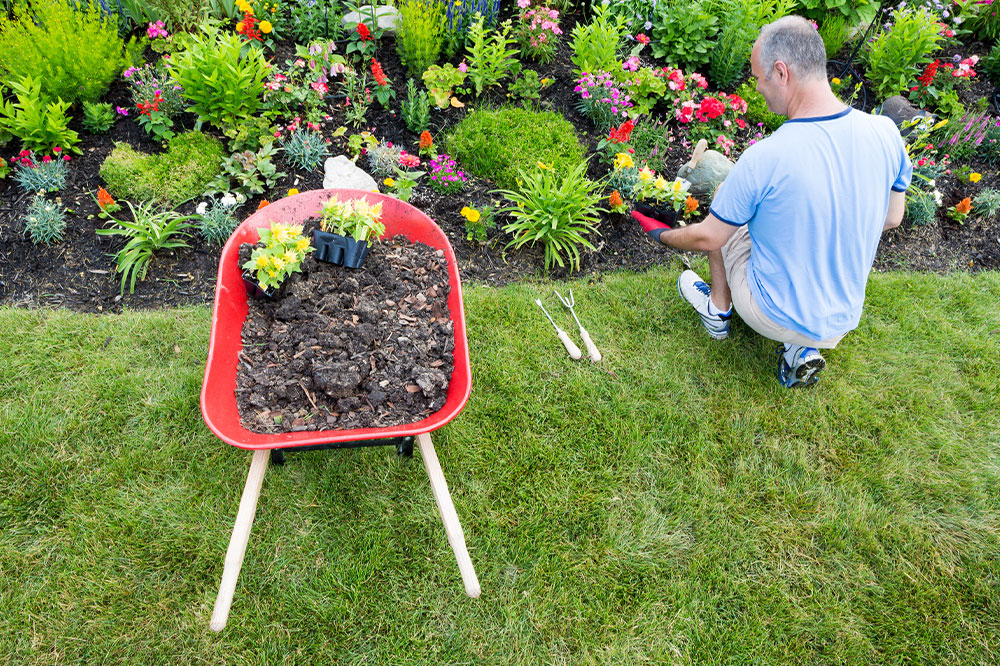
Top 6 ideas for garden landscaping
Well-maintained gardens and outdoor spaces enhance the appeal of the houses. Even the smallest spaces can be designed to be more functional and appealing. A well-designed garden can transform a dull area into a breathtaking outdoor space ideal for relaxing, gardening, or entertaining. A few simple tricks and adjustments can be used to change the landscape’s appearance. Follow these easy steps to make your garden one of the most attractive places to spend time.
Best ideas for small garden landscaping
Rock garden
Rock gardens are an excellent low-maintenance design element as they are visually appealing and self-sufficient. Combine large rocks with small stones to give your garden texture and a unique feel. This improves the area’s aesthetics and keeps the soil covered, reducing the need for weed removal and, as a result, saving money in the long run.
Use gravel
Crushed brick or gravel is an attractive, low-maintenance paving choice for tiny gardens. Compared to brick or flagstone, it is more affordable and straightforward. Lay down a layer of landscaping fabric to keep weeds from growing through the gravel. Gravel also allows rainwater to soak through the soil rather than flow down the incline.
Install a pond
A water garden only takes up a little backyard space. A water garden is an excellent way to deal with low or moist areas of your yard. A simple homemade pond can be created by excavating the area, installing a pond liner, and connecting a pump. A small pond can attract a variety of colorful butterflies and birds. Adding flowers and trees to the garden can only enhance its beauty while preserving its natural and fresh atmosphere.
Faux grass
A lush, green lawn can enhance the appearance of any home. However, maintaining a garden and mowing a lawn can take significant time and effort. Consider using fake grass, a clever way to have the same freshness without the extra maintenance. Modern technological advancements have improved the appearance and feel of artificial grass. It also provides a solid, lush foundation to build the rest of your plan because it always looks beautiful, no matter the weather.
Adding colors to furniture
Colorful plants and furniture can add color to the yard, making it stand out dramatically. Make your garden feel more like an extension of your home by adding patterned cushions and even an outdoor rug. Use large planters along the boundary to provide backdrops, subtle privacy, and intimate space. A seating area, regardless of size, is usually a top priority in outdoor settings. Create the ideal setting for entertaining or relaxing with a good book, a snack bar, and other amenities.
Curvy pathways
Adding curves to your garden walks is one way to add space to a small garden. A gently meandering walkway gives the impression that visitors are traversing a large area. Leave enough space in your route for two people to walk side by side comfortably. The curved path looks lovely, with a tile ribbon between each concrete slab. Place flowers and other small decorations on either side of the path to make it more appealing.
Design tips for small garden spaces
- Look for compact or tiny plants that add a bushy, lush appearance to the area while not occupying the entire space.
- Make a robust greenery framework. Use interesting plants with beautiful leaves before adding flowering plants. Concentrate on high-value trees, shrubs, and perennials with attractive leaves, seasonal blooms, unusual textures, colorful bark, and excellent fall color all year.
- Be careful when selecting outdoor furniture. Select seats with slimmer profiles over extra-deep ones with large armrests.
- Use a fountain or pond to add more natural sounds or feel. The presence of water features always improves a garden. For example, a simple tabletop pot or circulating wall fountain can transform the entire appearance of the outdoor scene.
- Make everything appear organized. The garden appears more ordered, with clean lines. In contrast to using flowing organic curves, crisp lines design can better define areas.
- Keep your color scheme neutral. Green combined with two or three other tones will make the space appear more organized and less visually congested.




